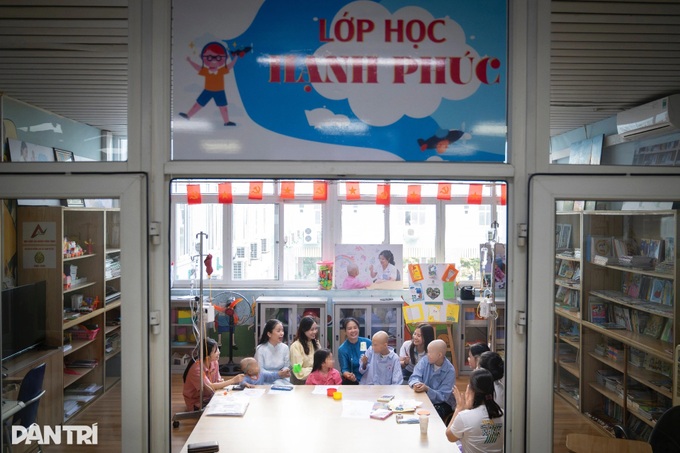
Located on the hospital’s third floor, the classroom opens every Monday and Friday afternoon.
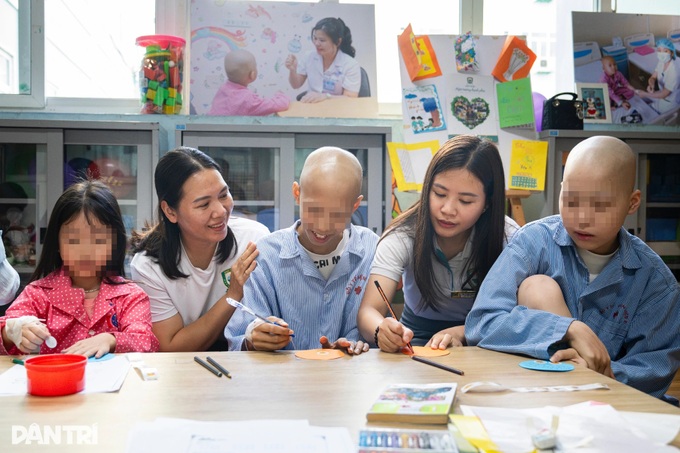
In this small, warm space, children undergoing treatment find joy, comfort and brief calm amid their exhausting battle with illness.

Some arrive with bandaged hands after a fresh infusion. Some have lost most of their hair to chemotherapy. Others are missing parts of their bodies after surgery.
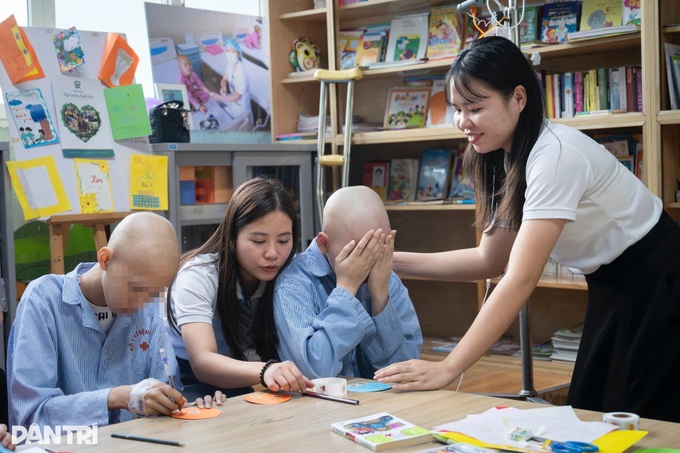
What they bring to class is not notebooks or textbooks but strips of medicine, spare masks and a fierce determination to keep learning and keep living despite disease closing in.
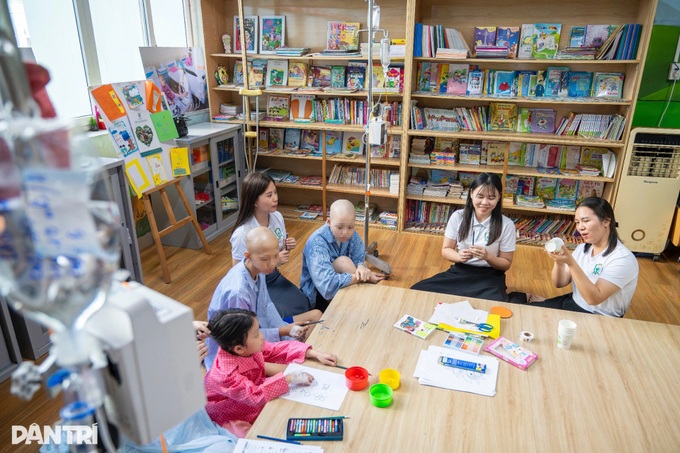
The class has never had a fixed number of students. Nguyen Thi Thuy Linh, a teacher who has been with the class since its first day, says:
“There are days when 20 children show up, and days when only three or four can make it because they are too exhausted after chemotherapy. When that happens, we divide the work. One teacher stays in class while another enters the rooms, if allowed, to teach each child individually.”

Pham Thi Tam, principal of Xanh Tue Duc School and the founder of the class, says:
“I realised children’s desire to go to school is immense. Many here had to leave school for treatment, while some have never been able to attend even a single day. I understood they needed a classroom to forget their pain for a while during treatment.”
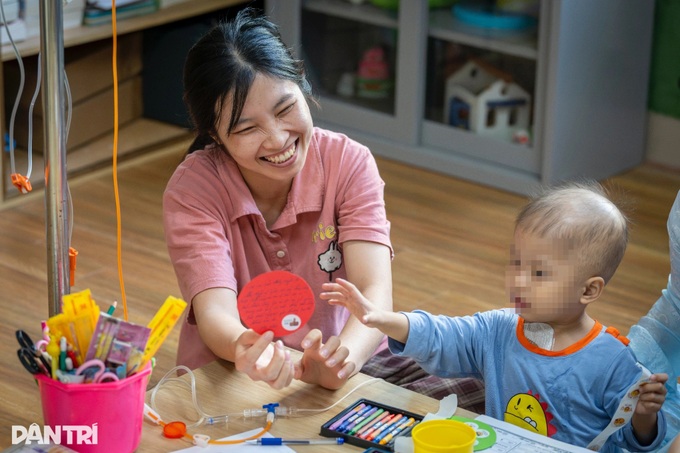

Lessons are designed for different age groups and health conditions. Some children are only three years old, still learning how to hold a pencil. Others are already in secondary school, their hands trembling as they write yet their eyes full of eagerness. Teachers must constantly find a balance between emotion and learning.

Pham Thi Huong, head nurse of the paediatrics department at K Tan Trieu Hospital who has spent 18 years caring for young cancer patients, says:
“Before this class existed, the children’s days revolved around infusions and long hours of fatigue. But since the ‘happy class’ began, they have gained a new emotional anchor. After chemotherapy, studying with teachers and friends eases both physical and mental pain.”
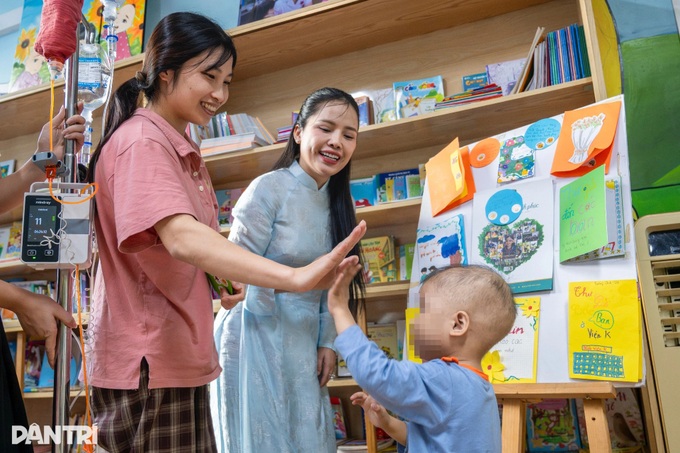
Each session begins with simple games to help ease the atmosphere. Just a few minutes of laughter can lift the children from the exhaustion of treatment.

Reading time is always the most anticipated moment. The children sit in a circle, quietly listening to stories. At the end of the session, each child picks a book to take home, a small but deeply warming joy.
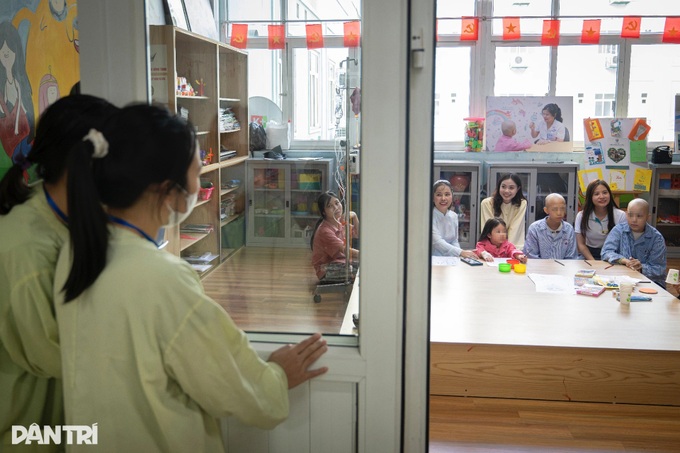
A mother said that after each radiotherapy session, she takes her child to the classroom. “It is the happiest time of the day for both of us,” she says.
